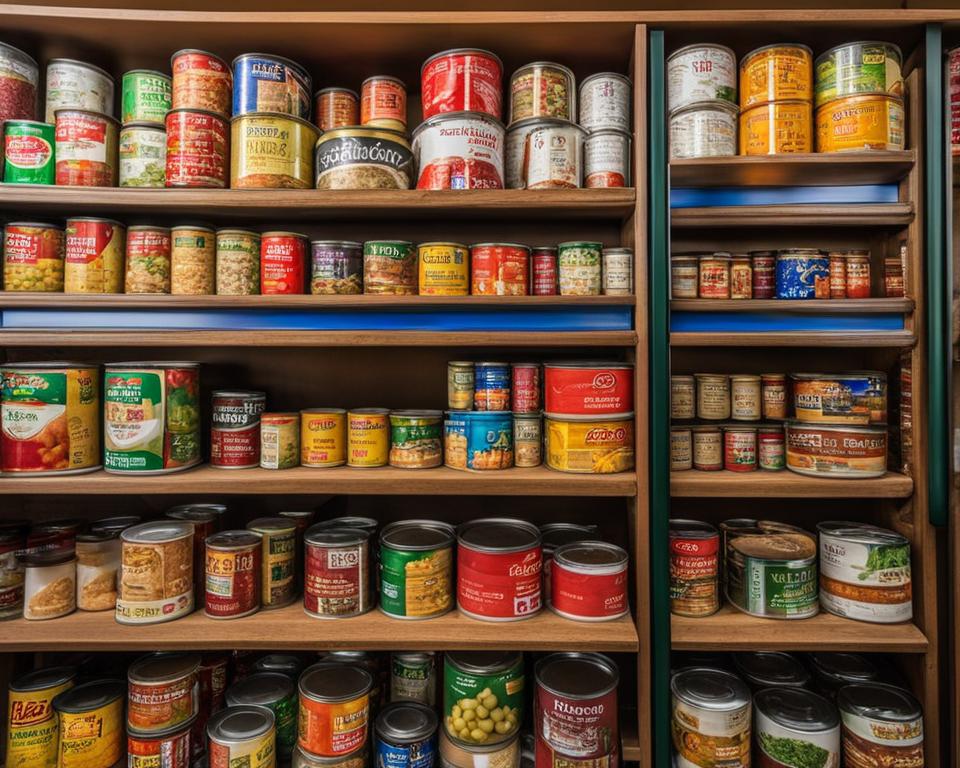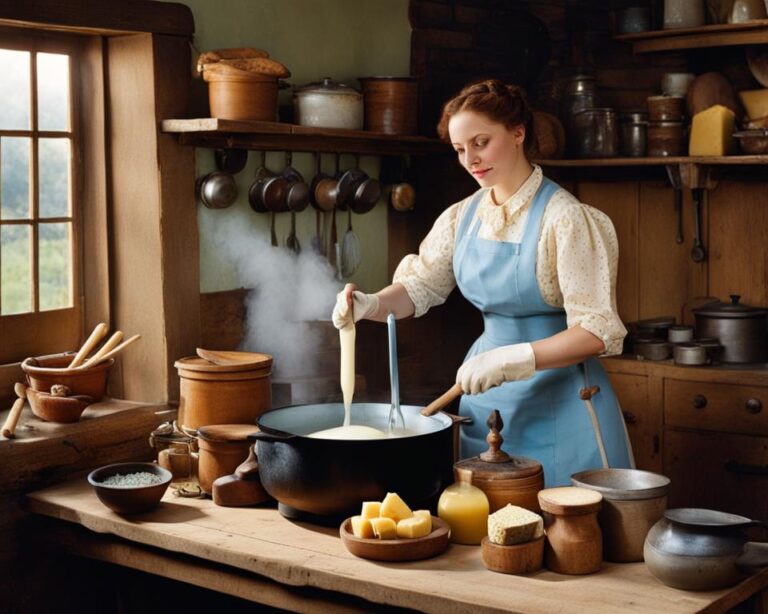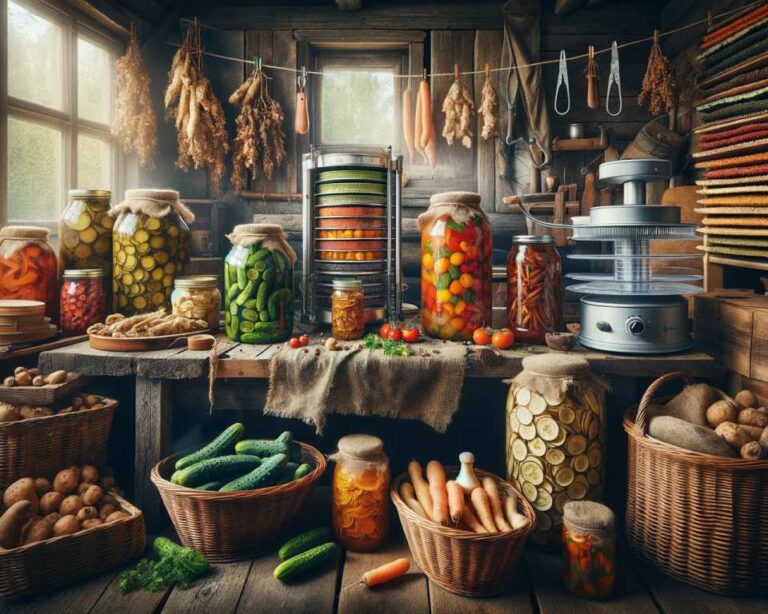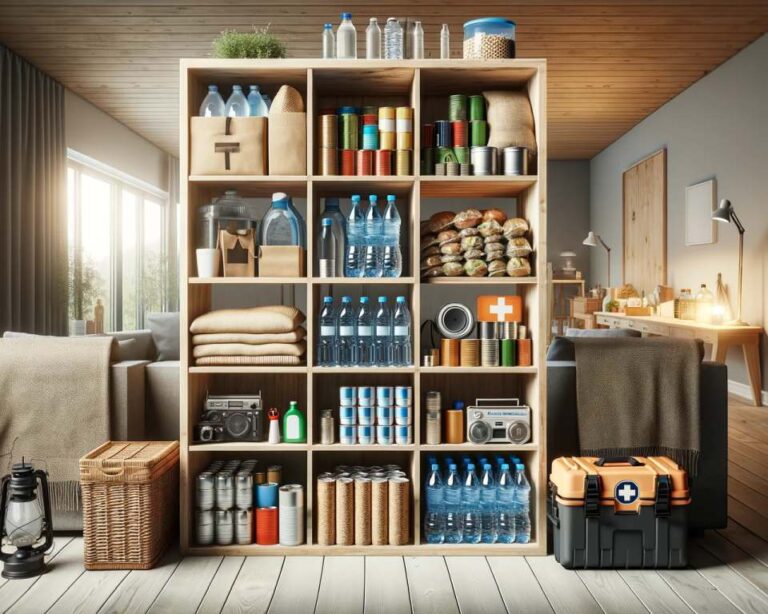Prepper’s Guide to Food Storage: Canned Goods and More
In this comprehensive guide, we will explore effective strategies for food storage tailored specifically for preppers. We understand the importance of being prepared for any emergency, which is why we have put together this guide to help you navigate the world of prepper food storage. Whether you are just starting your food storage journey or are already well underway, we will provide valuable insights to ensure you have the knowledge and resources to withstand any challenging circumstances.
One of the key components of prepper food storage is having a well-stocked supply of canned goods. Canned goods have a long shelf life and are convenient to store. In addition, they provide essential nutrients and variety to your emergency food supply. But canned goods are just the tip of the iceberg. We will also explore other food storage ideas, methods, and solutions to help you diversify your prepper pantry and maximize your survival food storage.
Throughout this guide, we will provide practical tips on how to organize your food storage, choose the right food storage containers, and rotate your food supply to maintain its freshness. We will also delve into long-term food storage tips, including the use of oxygen absorbers, mylar bags, and temperature control, to ensure the longevity of your stored food. In addition, we will discuss diversifying your food storage beyond canned goods by incorporating freeze-dried meals, dehydrated foods, and bulk grains and legumes.
Storing food in challenging situations can be a daunting task, but we will guide you through it. From alternative storage options to protecting your food from pests and environmental factors, we have you covered. And because maintaining your food storage is just as important as building it, we will discuss the importance of proper rotation, signs of spoilage, and knowing when to discard expired food items.
Key Takeaways:
- Prepper food storage is crucial for preparing for emergencies.
- Stock up on essential canned goods for a long-lasting and nutritious food supply.
- Explore other food storage options such as freeze-dried meals and bulk grains.
- Consider alternative storage methods for challenging situations.
- Maintain and rotate your food storage to ensure freshness and effectiveness.
The Basics of Food Storage for Preppers
In times of uncertainty and emergencies, having a well-stocked food storage is essential. As preppers, we understand the importance of being prepared for challenging circumstances. Whether it’s a natural disaster, power outage, or any other unexpected event, having a sufficient food supply can provide peace of mind and ensure our survival.
When it comes to prepper food storage, there are a few key principles to keep in mind. First and foremost, you’ll want to stock up on non-perishable foods that have a long shelf life. Canned goods, dried fruits and vegetables, rice, pasta, and beans are excellent options to consider.
Organization plays a vital role in effectively managing your food storage. By keeping your supplies neatly arranged, you can easily access what you need when the time comes. Consider investing in food storage containers that are durable, airtight, and stackable. Labeling each container with its contents and expiration date will help you maintain a well-organized system.
Getting started with prepper food storage may seem overwhelming, but it doesn’t have to be. Begin by taking inventory of your current pantry and identifying any gaps or areas that need improvement. Gradually build up your supplies by adding a few extra items to your grocery list each week. Over time, you’ll accumulate a robust and diverse food storage.
Remember, emergency food storage isn’t just about quantity; it’s also about quality. Aim for a well-balanced diet that includes a variety of food groups. Incorporating freeze-dried meals and dehydrated foods into your storage can enhance the nutritional value and provide more meal options.
“Having a well-stocked food storage is like having insurance for your family’s well-being during emergencies. It brings peace of mind and ensures that we are prepared for any situation that may come our way.” – Sarah Thompson, Prepper Extraordinaire
In the next section, we will explore essential canned goods that every prepper should have in their food storage. From vegetables to proteins, we’ll discuss the importance of varied options and how they contribute to maintaining a balanced diet during times of crisis.
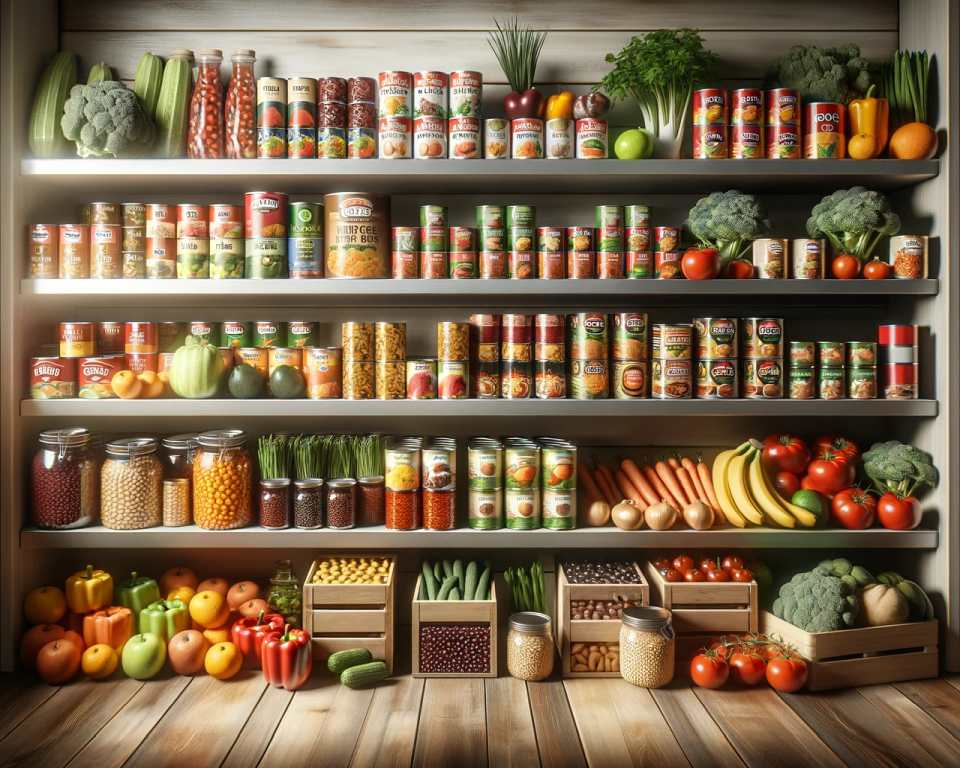
Essential Canned Goods for Preppers
Canned goods are a crucial component of any prepper’s food storage. They provide convenience, long shelf life, and essential nutrients in times of emergency. In this section, we will explore the must-have canned goods that every prepper should stock up on to ensure their survival.
Canned Vegetables
When it comes to canned vegetables, variety is key. Stock up on a range of vegetables such as corn, green beans, peas, carrots, and tomatoes. These versatile ingredients can be used in soups, stews, casseroles, and even enjoyed on their own as a side dish. Ensure you have an ample supply of canned vegetables to meet your nutritional needs during a crisis.
Canned Fruits
Canned fruits provide essential vitamins and a touch of sweetness to your emergency food supply. Opt for fruits packed in water or 100% fruit juice to minimize added sugars. Some popular options include peaches, pears, pineapple, and mixed fruit. These fruits can be enjoyed as a snack, added to desserts, or used in smoothies for a nutritious boost.
Canned Meats
Protein is essential for maintaining energy and muscle mass during challenging times. Stock your food storage with canned meats such as chicken, tuna, salmon, and even SPAM. These canned meats are versatile and can be used in sandwiches, pasta dishes, salads, or enjoyed on their own. Look for varieties packed in water or oil for enhanced nutrient content.
Canned Soups
Canned soups are a lifesaver when it comes to quick and easy meals during emergencies. Choose a variety of soups that suit your taste preferences and dietary needs. Classic options like chicken noodle, tomato, and vegetable are versatile and comforting. Don’t forget to include broth-based soups for hydration and savory flavors.
Choosing Durable Food Storage Containers
Proper food storage containers are essential for keeping your canned goods fresh and protected. Invest in airtight food storage containers that are made from durable materials such as BPA-free plastic, glass, or metal. These containers will keep your canned goods safe from pests, moisture, and air exposure, ensuring their long shelf life.
Consider using clear containers for easy visibility and organization. Label each container with the expiration date to practice proper rotation and avoid consuming expired canned goods.
Organizing Your Canned Goods
Organizing your canned goods is crucial to ensure easy access and proper rotation. Consider following these tips:
“Group similar canned goods together to create designated sections for vegetables, fruits, meats, and soups. This way, you can easily identify what you need when planning meals. Arrange the cans in a ‘first in, first out’ order, placing the oldest cans at the front for immediate use. Regularly check and restock your food storage to ensure you always have a well-stocked supply.”
By rotating your canned goods and maintaining an organized food storage area, you can be confident in your ability to rely on these essential supplies during an emergency.
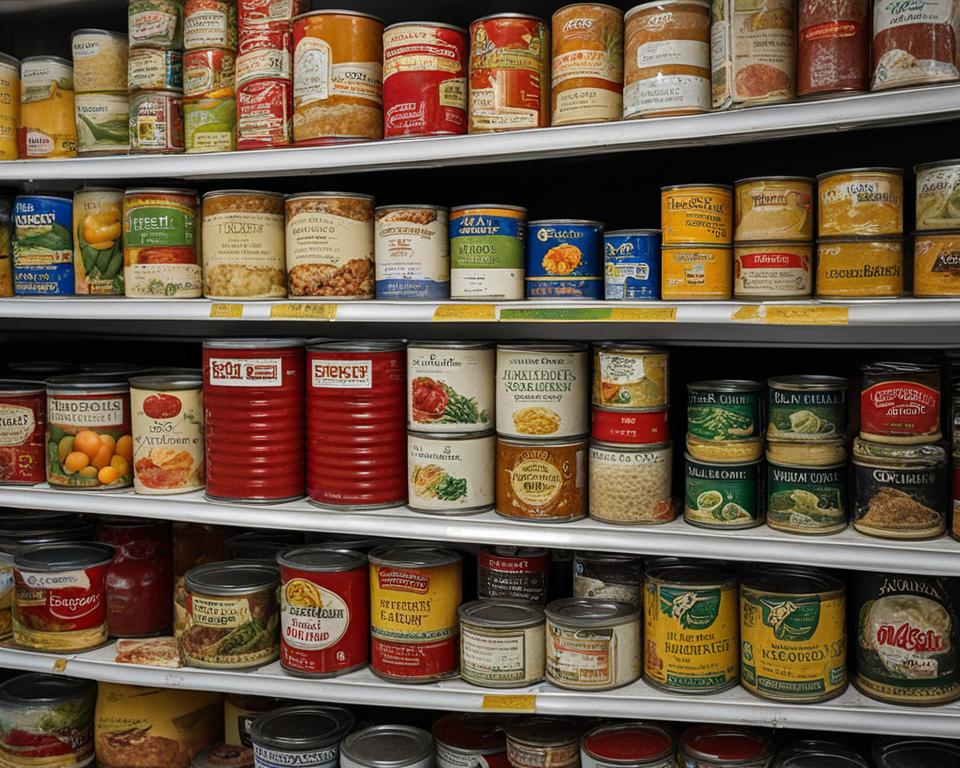
Long-Term Food Storage Tips for Preppers
In order to be fully prepared for an extended emergency, preppers must have a plan for long-term food storage. It’s crucial to ensure that your food supply remains viable and safe for consumption. In this section, we will provide you with valuable tips and methods to maximize the longevity of your stored food.
One important aspect of long-term food storage is using oxygen absorbers. These small packets are designed to absorb any excess oxygen within the storage containers. Oxygen can accelerate the deterioration of food, leading to spoilage and loss of nutritional value. By using oxygen absorbers, you can significantly extend the shelf life of your stored food, ensuring that it remains fresh and safe to eat.
Another effective method for long-term food storage is utilizing mylar bags. These durable and heat-sealable bags provide an additional barrier against oxygen, moisture, and pests. When combined with oxygen absorbers, mylar bags create an optimal environment for preserving your food. Make sure to label each bag with the contents and date of storage for easy identification and rotation.
Temperature and humidity control are also crucial factors in maintaining the quality of your stored food. It is recommended to store your food in a cool, dry place with a temperature between 50°F and 70°F (10°C to 21°C). Avoid areas with excessive fluctuations in temperature or high humidity levels, as they can degrade the quality of your stored food.
Understanding the shelf life of different food items is essential for effective long-term storage. Some foods have a longer shelf life than others and can be stored for several years if stored properly. Canned goods, for example, can last for many years beyond their expiration dates if they are stored in a cool and dry environment. However, certain foods, such as oils and nuts, have a shorter shelf life due to their higher fat content and should be rotated more frequently.
In conclusion, long-term food storage requires careful planning and attention to detail. By utilizing oxygen absorbers, mylar bags, and proper temperature and humidity control, you can significantly extend the shelf life of your stored food. Understanding the shelf life of different food items will also help you to effectively rotate your stock and ensure that you are always consuming the freshest and most nutritious food in your storage.
Beyond Canned Goods: Diversifying Your Food Storage
While canned goods are essential for survival food storage, it’s important to diversify your food storage options to maximize nutrition and variety in your emergency preparations. In this section, we will explore other food storage ideas to complement your canned goods and provide a well-rounded, balanced food supply.
The Benefits of Freeze-Dried Meals
Freeze-dried meals are a popular choice for survival food storage. They offer several advantages, including long shelf life, lightweight packaging, and convenience. Freeze-dried meals retain their nutritional value and are easy to prepare by simply adding hot water. These meals are available in a wide range of flavors and can provide a delicious and satisfying meal during an emergency situation.
Dehydrated Foods: A Versatile Option
Dehydrated foods are another excellent choice for long-term food storage. Dehydrating fruits, vegetables, and meats removes their moisture content, preserving them for extended periods. Dehydrated foods are lightweight, compact, and retain much of their nutritional value. They can be used in a variety of recipes or enjoyed as stand-alone snacks, making them a versatile addition to your food storage pantry.
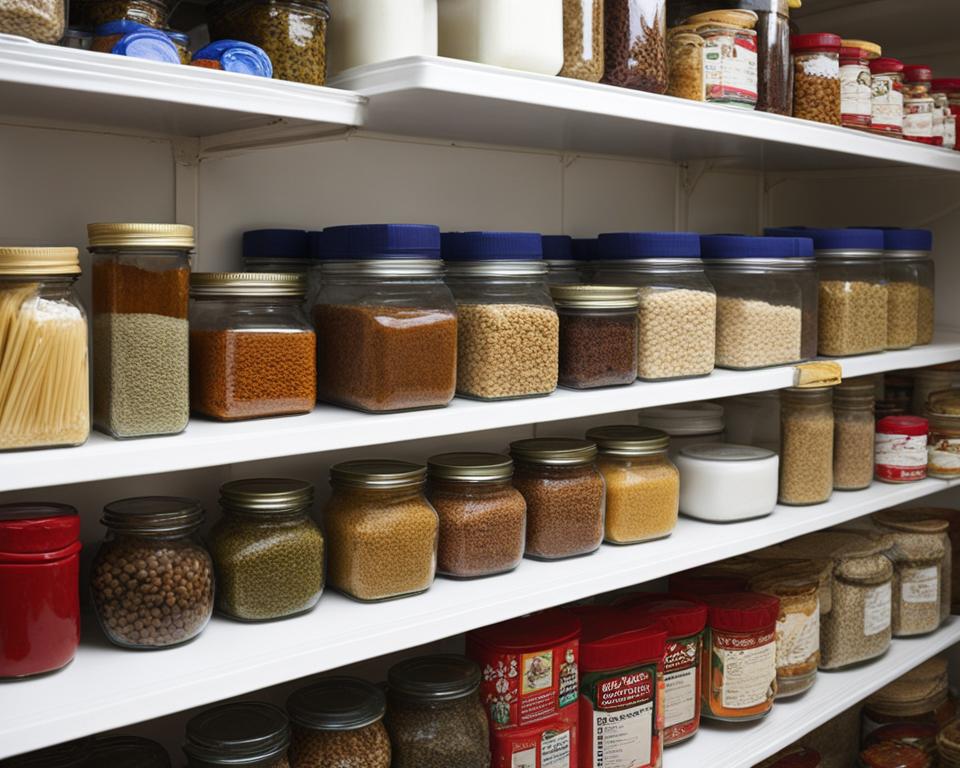
Bulk Grains and Legumes for Nourishing Meals
Incorporating bulk grains and legumes into your food storage provides a sustainable and cost-effective option. These dry, storable staples, such as rice, pasta, beans, and lentils, are rich in carbohydrates, protein, and essential nutrients. They can be used as a base for hearty meals and provide the foundation for a well-balanced diet. With proper storage in airtight containers, bulk grains and legumes can last for years, ensuring you have a reliable source of nourishment during an emergency.
By diversifying your food storage with freeze-dried meals, dehydrated foods, and bulk grains and legumes, you can enhance your survival food supply with a variety of flavors, nutrients, and meal options. With proper rotation and storage, these alternative food storage ideas will help sustain you and your family during times of uncertainty.
Storing Food in Challenging Situations
When it comes to food storage for emergencies or less-than-ideal conditions, preppers need to be prepared for any situation. In this section, we will explore alternative storage options and provide tips for protecting your food storage from potential challenges.
Alternative Storage Options
One food storage solution to consider is a root cellar. These underground storage areas provide natural insulation and temperature control, which can help preserve your food longer. Another option is under-the-bed storage, where you can utilize the typically unused space beneath your bed to store non-perishable items. Additionally, if you have access to a climate-controlled facility, such as a storage unit, it can be an excellent place to store your emergency food supplies.
Protecting Your Food Storage
It’s crucial to protect your food storage from pests, heat, light, and moisture. Here are some tips to ensure the integrity of your supplies:
Use airtight containers: Invest in food storage containers that seal tightly to prevent pests and moisture from entering.
Store in a cool and dry place: Find a location in your home that remains cool and dry all year round. Avoid storing food in areas prone to temperature fluctuations or high humidity, such as garages or attics.
Keep away from light: Exposure to light can degrade the quality of your stored food. Store items in dark or opaque containers to minimize light exposure.
Rotate your stock: Regularly check the expiration dates on your food items and rotate your stock by using the oldest items first. This helps ensure that your emergency supply remains fresh and usable.
By considering alternative storage options and taking steps to protect your food storage, you can be confident in having a reliable supply of emergency food when you need it most.

Maintaining and Rotating Your Food Storage
In order to ensure the longevity and effectiveness of your food storage, it is crucial to prioritize maintenance and rotation. By following proper techniques, you can have confidence that your food supply will remain fresh and ready for any emergency.
One essential practice is utilizing the First In, First Out (FIFO) method when organizing your food storage. This means consuming the oldest food items first, while placing new purchases towards the back. This ensures that items are used before they expire and minimizes the risk of food waste.
It is also important to be aware of the signs of spoilage and to promptly discard any expired or spoiled items. Look out for changes in color, texture, or odor, as these can indicate that the food is no longer safe to consume. Regularly inspecting your food storage will help you maintain a healthy and reliable supply.
Additionally, regularly checking the expiration dates of your stored food items is crucial for long-term food storage. By keeping track of expiration dates and regularly rotating your inventory, you can ensure that your food remains fresh and usable. This will provide peace of mind, knowing that your food storage is well-maintained and ready to sustain you in times of need.

